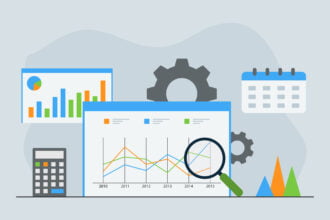The third CTO Road Show is starting start next week in the Swiss cities of Bern and Zurich, followed by stops in another twelve cities across Europe, Middle East and Africa over the next four weeks. The road show was originally set up in the crisis-ridden year of 2009 when cuts in travelling expenditures threatened to clip the wings of many members of the data warehousing community who would otherwise have come to our larger conferences. Back then, we decided that we would do the travelling ourselves to discuss the latest developments with our customers and prospects.
The third CTO Road Show is starting start next week in the Swiss cities of Bern and Zurich, followed by stops in another twelve cities across Europe, Middle East and Africa over the next four weeks. The road show was originally set up in the crisis-ridden year of 2009 when cuts in travelling expenditures threatened to clip the wings of many members of the data warehousing community who would otherwise have come to our larger conferences. Back then, we decided that we would do the travelling ourselves to discuss the latest developments with our customers and prospects. The economy has recovered but, at the same time, this tour has become a highlight in its own right, so Stephen Brobst and I will be on the road again soon.
During the recent Teradata Universe conference in Barcelona, my colleague Mario Bonardo pointed to a map that gave you a good idea of where tourists tend to go in a city as opposed to the places preferred by the locals. Now, the latter are what more or less every travelling guide claims to have discovered. What makes this graph so interesting is that it is not based on some guide book writer’s subjective impression but on cold, hard facts, namely the GPS positions of digital cameras when shooting a photo.

There are maps like this for some of the cities that we are going to visit right now so I will be curious to compare our itinerary to that of people who go there on holiday. Maybe this will help us to actually discover unknown beauties off the usual tourists’ trail in the little time we have. On the other hand, I wouldn’t be surprised if we were simply proving Stephen’s rule of thumb that, most of the time, the data reveals just how average individual people really are, not how outstanding.
In many cases, just like in the example above, building a good graph is the most practical way of turning data into easily comprehensible information. And there is a new trend that makes visualization technologies extra relevant in the near future: increasingly, organizations extend the use of their data warehouses beyond their own boundaries, giving access to customers, suppliers and other stakeholders. Stephen refers to this development as “consumer intelligence” if provided by companies, or “citizen intelligence” if furthered by open government initiatives.
This trend documents a wide-spread consciousness that the data available is still “under-exploited” – you could indeed “do more with your data” if only you were aware of the information need you could cater for and if you had the right technology in terms of delivery. It also marks a fundamental shift in the treatment of data – sharing them (or at least some of them) rather than hoarding them like a treasure. New York City, for example, has made more than 350 data sets publicly available and has invited (in fact, wooed with the “BigApps” awards) developers to create apps, services etc. leveraging official data. Fields of application include “Roadify”, a service that alert drivers of road closures or fires, and “Don’t Eat.at” where you can check if the restaurant you consider having lunch at is complying with official standards of hygiene.
The more I think about it, the more it seems to me that we are indeed witnessing a second information revolution within 15 years. Originally, the internet brought fast and easy access to libraries of (static, pre-fabricated) documents and photos, whereas now it opens up (dynamic) data bases and allows citizens and consumers to query them by their own means and for their own ends. Analytical apps will be part of the user-generated content in the coming years. And visualization will play an important part in making them popular.








